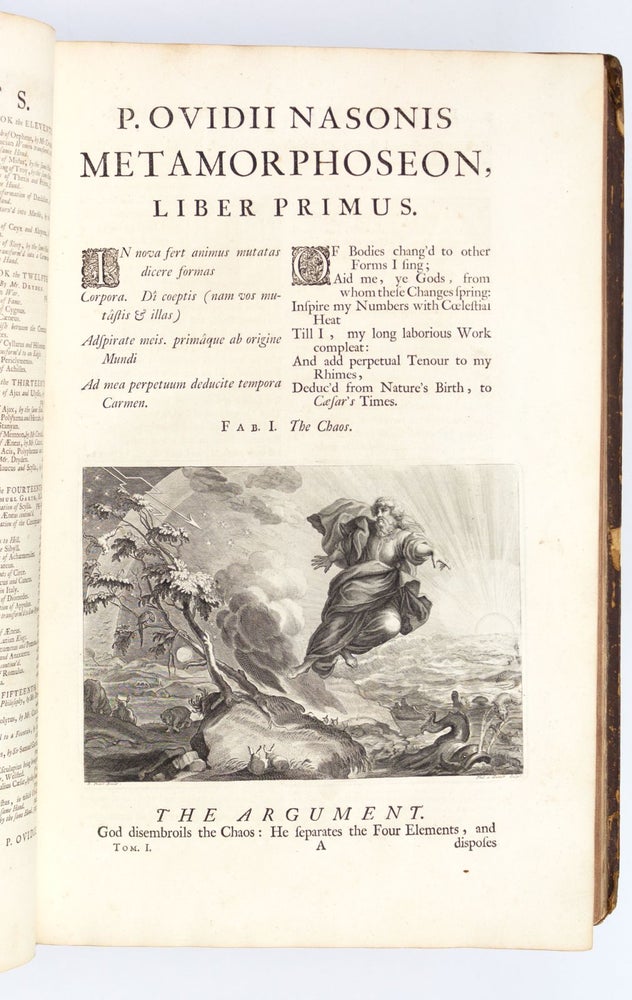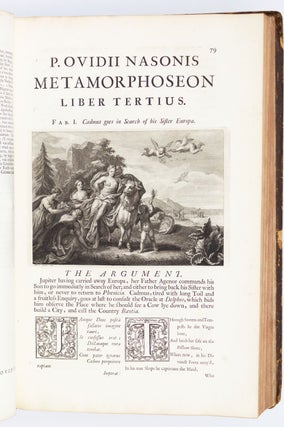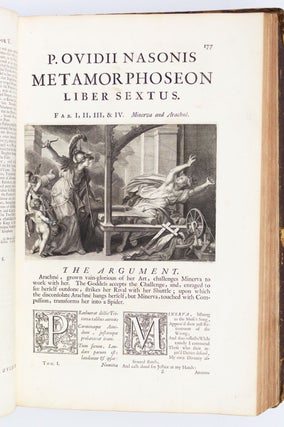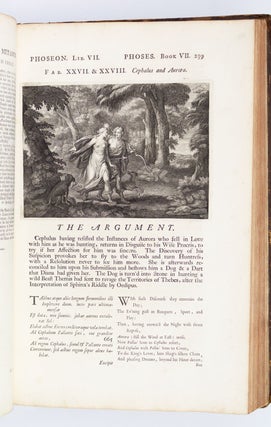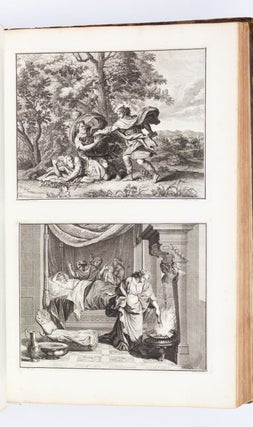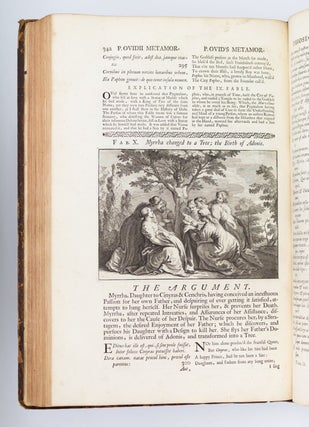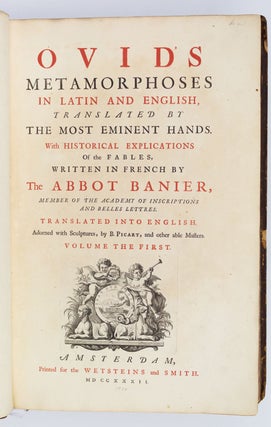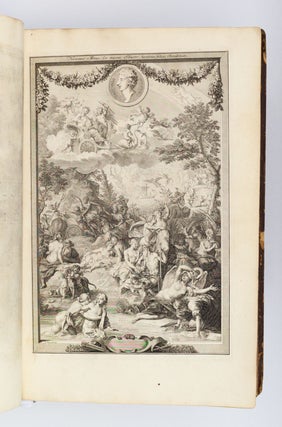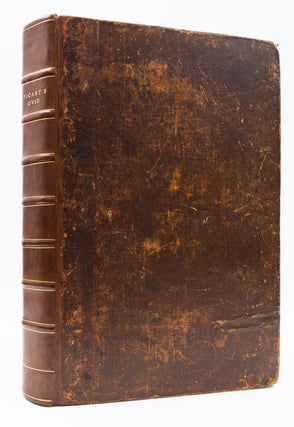OVID'S METAMORPHOSES, IN LATIN AND ENGLISH.
(Amsterdam: Printed for the Wetsteins and Smith, 1732). 480 x 305 mm. (19 x 12"). 13 p.l., 247, [1] (blank) pp.; 1 p.l., 249-524 pp., [2] leaves. Two volumes, continuously paginated, bound in one. Translated by John Dryden, John Addison, Alexander Pope, and other "eminent hands," with explications by Abbé Banier. First Printing of this Edition.
Contemporary dark brown calf, sturdily rebacked to style, raised bands flanked by gilt rules, gilt lettering, hinges neatly reinforced. Engraved printer’s device on title pages, arms of the Countess of Pembroke on dedication page, woodcut head- and tailpieces and initials, full-page engraved allegorical frontispiece, plus 130 HALF-PAGE COPPER-ENGRAVED PLATES BY BERNARD PICART, CHARLES LE BRUN, AND OTHERS. Parallel text in Latin and English. Front pastedown with book label of Newell's Library and with engraved bookplates of American travel writer James Hale Bates (1845-1901) and of John Peachey, Esq. Cohen-de Ricci 768; Brueggeman, pp. 624-25; Brunet IV, 285; Lowndes III, 1744. ◆Covers rather abraded, corners quite rubbed, but the restored binding entirely sturdy and inoffensive, with the spine perfectly suitable, even if rather plain; internally with only trivial imperfections (a few smudges, isolated mild browning, a wax stain here and there), but THE TEXT AND PLATES IN VERY FINE CONDITION, the leaves especially clean, the margins extremely ample, and the engravings richly impressed.
Cohen-de Ricci calls this splendid edition of Ovid's tales "a magnificent work," and Brunet proclaims it beautiful, pointing out that it is sought after because of the wonderful plates by Picart and others. According to Ray, "Picart was the outstanding professional illustrator of the first third of the eighteenth century," and the critic cites this work as one of the highlights of the artist's later years, praising its "stately designs, replete with allegorical and mythological trappings." Bernard Picart (1673-1733) was born in Paris, where he learned engraving from his father, Etienne, and from Sébastian Le Clerc. Ray tells us that "he early acquired a reputation both as an artist and engraver." Picart moved to the busy publishing city of Amsterdam sometime before 1712, and established himself as both a printseller and as an illustrator/engraver; he also started a school for engravers ca. 1718, where he could train the artists for his atelier. Picart designed and engraved an impressive body of illustrations for Dutch printers at a time when, according to Ray, "designs for the finest illustrated books were typically drawn by leading painters. He worked for the most part in the fading baroque tradition, but there are elements in his immense production which herald the new age [of Rococo design]." These famous tales of transformation provided a rich source of inspiration to our transformational artist, who often chooses to depict his subject mid-transition, as they mutate from nymph to laurel tree or from hunter to stag. Brunet informs us that three editions of this work were issued simultaneously by the publisher with French, Dutch, and English translations accompanying the Latin. The text chosen for this English edition is that of the acclaimed 1717 translation edited by Sir Samuel Garth and printed by Jacob Tonson. Dryden did a masterful job of capturing the poem's vivid imagery and emotional intensity, while also replicating the effect produced by rhythmic poetic meter. (ST17496-041)
Price: $4,500.00

